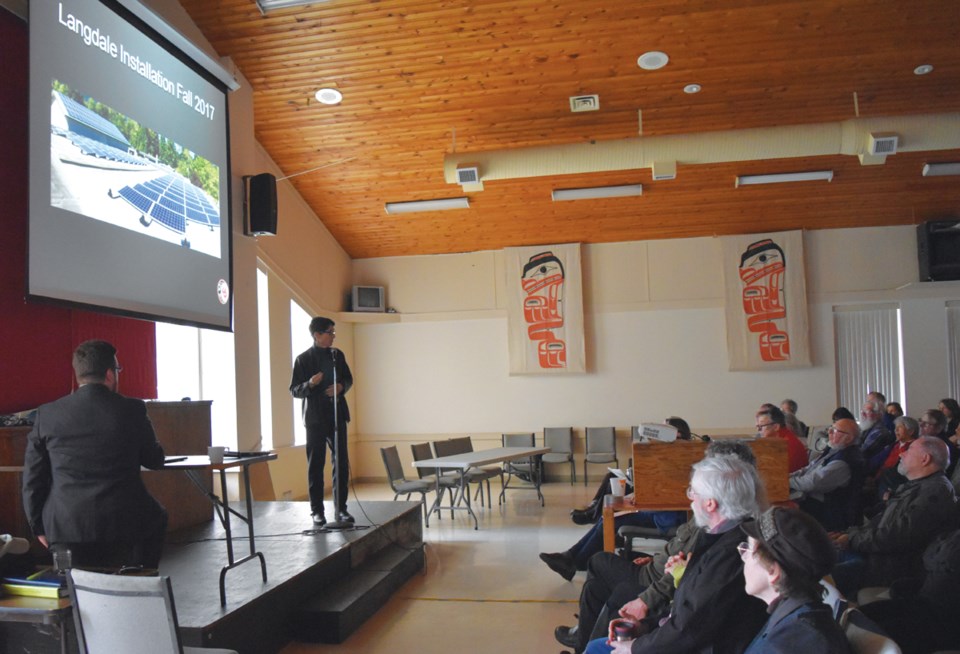If the Sunshine Coast wants its own community solar array, a residential property will need to be found – and owners will have to be willing to pay a premium for electricity.
The conclusion comes from research by Matt McLean, who was hired by the Sunshine Coast Community Solar Association (SCCSA) with a grant from the Sunshine Coast Community Foun-dation to conduct a survey and explore the viability of building a community array on the Coast.
More than 100 people filled the shíshálh Nation band hall to hear his findings and to get firsthand accounts of going solar and off-grid. The event was hosted by the SCCSA, which was formed in 2015 to promote renewable solar energy on the Coast, including organizing solar panel bulk buys.
McLean, project manager for the Sunshine Coast Community solar array, who’s also the executive director at Coast Car Co-op and the Sechelt Downtown Business Association, surveyed just shy of 200 people, and found that even though many people aren’t able to install arrays on their own homes, they are willing to invest. “There is at least $200,000 available for investing in a community solar array on the Sunshine Coast,” said McLean, which he said is “outstanding.”
On the flip side, the survey found those willing to spend also expect a payoff. “I think the biggest lesson we got was that people want some financial return,” McLean said.
McLean worked with Vancouver-based business Solshare to establish an economic model for the array, and said they needed to experiment because the province lacks what are known as feed-in tariffs – payments made to consumers who generate their own renewable energy.
Their idea is for members to purchase shares in Solshare, which would pay for the capital costs to install panels on a residential building. The property owner would pay a premium for the solar electricity at approximately 14 cents per KWh, compared to the average 11-cent rate paid by BC Hydro consumers. However, the price would increase at half the rate that BC Hydro’s rate increase, resulting in an “inflection point” after 16 years, when the electrical rate for solar would be less than the BC Hydro rate, pending BC Hydro rate increases.
“The great thing about this program is that the building has no additional capital costs; it’s all operating costs,” McLean said. “People think you install a solar array, you put a bunch of capital costs in and it reduces your electrical operating costs. This flips it on its head,” he said.
During his presentation, audience members asked about the feasibility of the model using commercial buildings, but McLean said the model only works for residential buildings, since they pay more for electricity. He added that the reason for a roof rather than a field or other venue is to make it easier to plug the array into an existing residential power system.
He said the most difficult challenge will be to find a residential property where the owners will be willing to pay the increased price for electricity. “There have been a couple of property owners who said they might be interested. So I’ll be in touch with them in the next couple of weeks,” McLean told Coast Reporter after the meeting.
Community arrays exist in New Westminster as well as Nelson, where they have their own municipal utility.
Other speakers included solar panel enthusiasts Lorne Berman, who has lived off-grid for more than 40 years, and Ryan Logtenberg, who has 36 solar panels, and made the case for how solar increases property value. Sunshine Coast School District trustee Betty Baxter spoke about the district’s prolific use of panels to power schools from Pender Harbour to Langdale. SCCSA board members Jim Pawley and Gerry Pageau also spoke.



